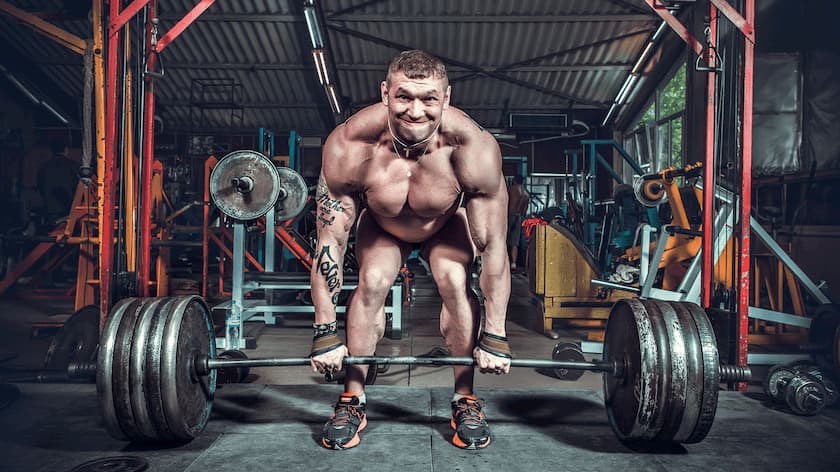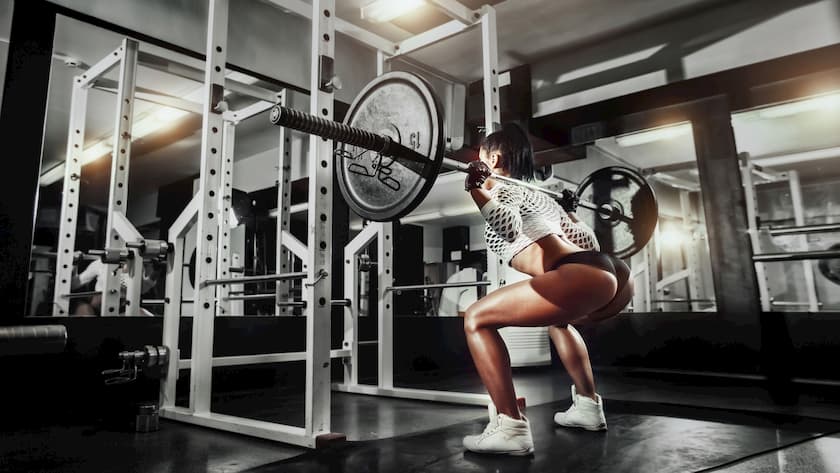Starting Strength is widely considered to be the best novice strength training program by the weightlifting community. Its writer, Mark Rippetoe, is the owner of Wichita Falls Athletic Club. He’s been in the strength industry for over 25 years and has many years under his belt as an athlete.
The expression “Learn from the best to be the best” comes to mind. Mark has numerous accomplishments to accredit him as a leading figure in the industry, but his 1,643-pound raw powerlifting total speaks for itself.
“Strong people are harder to kill than weak people and are more useful in general.” – Mark Rippetoe
Starting Strength is first and foremost a beginner program. Although many people consider ‘beginner’ to imply someone new to weightlifting, there is much more to it.
A beginner in the powerlifting sense is someone who can still put weight on the bar every time they go to the gym. Programs that require a lifter to make consistent day-to-day progress are grouped as linear progression programs.
Many lifters are too proud to consider themselves beginners. They want to think of themselves as advanced athletes and hop on a lifting regiment like Sheiko or Smolov.
These lifters are shooting themselves in the foot because you cannot make gains faster with another program then you can with linear progression, provided you can still make consistent gains in the weight room. With that said, let’s get to the dirty details of this legendary routine.
There are only 5 primary exercises in Starting Strength. These include the squat, the deadlift, the bench press, the military press, and the power clean. You may be asking yourself “Only five exercises? Surely that’s not enough variety.” Its beauty is in its simplicity. By making short jumps in weight each workout, you’re rapidly putting weight on the most important compound movements that are essential to getting bigger and stronger.
These exercises are broken down into 2 different days: day A, and day B. On day A you’ll be performing the back squat, the bench press, and the deadlift. On day B, you’ll be back squatting, military pressing, and power cleaning. The lifter will be in the gym 3 days per week, alternating between workout A and workout B each time.
Make sure you include at least one rest day between each day of training. Some weeks you’ll be bench pressing and deadlifting twice, and other weeks will have you mostly military pressing and power cleaning. However, every workout you’ll be squatting.
Mark Rippetoe highly recommends that you perform the exercises in the following order: squatting, then an upper body movement, then a pulling movement.
Workout Schedule
Monday: Workout A
Wednesday: Workout B
Friday: Workout A
The following week, your schedule will look like this:
Monday: Workout B
Wednesday: Workout A
Friday: Workout B
As you can see, you alternate workouts every other training day. You don’t have to train only on Monday/Wednesday/Friday though; you can also train on Tuesday/Thursday/Saturday instead.
The critical thing to remember is that you should train 3 times a week non-consecutively to let your body rest for a full day after your training day. After one week of training is over, you take two days off and then start the next week of training.
Workout A
Note: (Warm up sets are not listed but are essential. Proper warm-ups help activate muscles to perform at their best under heavy loads in addition to lowering the risk of injury.)
| Exercise | Sets | Reps |
|---|---|---|
| Back Squat | 3 | 5 |
| Bench Press | 3 | 5 |
| Deadlift | 1 | 5 |
Workout B
| Exercise | Sets | Reps |
|---|---|---|
| Back Squat | 3 | 5 |
| Military Press | 3 | 5 |
| Power Clean | 3 | 5 |
You may have noticed that the deadlift is only done for 1 work set. Deadlifts are the most taxing lift you can do, so doing multiple sets would not allow for most lifters to recover enough for their next workout. Also, note that power cleans may be done for 5 sets of 3 reps if you prefer. However, all other lifts must be done as 3 sets of 5 reps.
You may think squatting three times each week is too much, but if it weren’t possible then Starting Strength wouldn’t be anywhere near as popular and effective as it is. The key to making big gains is small, consistent jumps in weight.
You’ll be adding 5 pounds to each lift every time you step into the gym. Let’s play around with some math to illustrate this. Assume a lifter has the following Five Rep Maxes:
- Squat: 185
- Bench Press: 135
- Deadlift: 225
- Military Press: 95
- Power Clean: 155
Adding 5 pounds to each day’s 3 lifts that are being performed that day, every lift except for the squat will gain an average of 7.5 pounds per week. The squat will gain 15 pounds per week due to being performed every workout. This same lifter with the above Five Rep Maxes would, in theory, have the following 5 Rep Maxes after 3 months (12 weeks):
- Squat: 365
- Bench Press: 225
- Deadlift: 315
- Military Press: 185
- Power Clean: 245
In just 3 short months, this lifter has put 180 pounds on his squat and 90 pounds on each other lift. Note that the deadlift is the fastest increasing lift and thus you may add 10 pounds per workout if you find this to be a comfortable rate. Do not push too fast though. Consider the analogy of the tortoise and the hare. Although the hare is fastest out of the gate, the tortoise wins in the end. Slow and steady wins the race.
The math above illustrates just how effective linear progression is. To make sure these lifts are increasing, make sure you’re eating enough.
You’ll need a LOT of food to keep up with these weight increases, so pound down the meat and veggies. This is not an excuse to get fat, but it’s absolutely necessary to eat big to get big.
All good things must come to an end. At some point, you’ll find that you can’t make progress every day and you might start missing some lifts. At this point, you’ll need what’s called a reset. To reset, take 90% of your current 3×5 weight and work back up from that point.
For example, let’s say you squat 315 for 2 sets of 5 reps, and on your third set, you miss the last rep. Take 90% of 315, and you end up with approximately 285 pounds. This will be your new working set for your next workout. Reset as needed, but if you find yourself resetting too often, it might be time to consider an intermediate level program.
Pat yourself on the back; by the time you’ve milked everything you can out of linear progression you’ll be stronger than nearly everyone in your gym.
In conclusion, Starting Strength should be a top consideration for any lifter who’s relatively new to the sport and wants to get bigger and stronger. It’s worked for thousands of people, and it’ll work for you too if you stick to it, pay your dues, and eat like there’s no tomorrow. If you have any questions, you can leave them in the comments.




Leave a comment
All comments are moderated before being published.
This site is protected by hCaptcha and the hCaptcha Privacy Policy and Terms of Service apply.